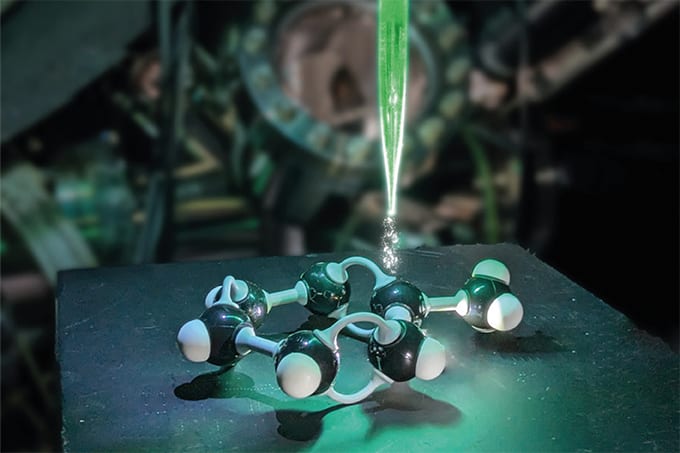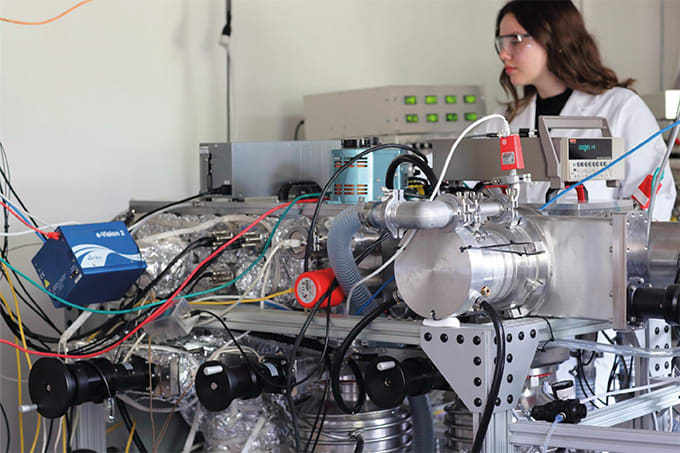
As the pharmaceutical industry embraces biologic drug development, pipelines are becoming more iterative, data-intensive, and scale-sensitive. To keep pace, laboratories are turning to smarter, more integrated automation solutions that enhance throughput, ensure consistency, and reduce risk across every stage of the workflow.
Although significant strides have been made in automating upstream and downstream bioprocesses, critical bottlenecks remain – particularly in cell culture stages, such as transient transfection and clone selection. These steps are essential to biologics development but often remain only partially automated, which introduces variability and inefficiencies that can delay innovation.
To explore how the biotherapeutics sector is addressing these challenges – and to better understand the technologies shaping the lab of the future – we spoke with Dieter Wagner, Automated Incubation Product Manager at Thermo Fisher Scientific. He shares his insights into the automation gaps that persist in biologics labs, the evolving capabilities of the Thermo Scientific™ Cytomat™ Automated Incubator product line, and the broader digital transformation underway in life science workflows.
What are the most pressing challenges labs face when trying to fully automate biologics workflows, particularly in processes such as cell line development?
While upstream and downstream processes are often already automated, shaking incubation typically remains a manual step – limiting both throughput and consistency. One of the biggest challenges arises during transient transfection and clone selection, where long incubation times are frequently interrupted by manual tasks such as seeding and feeding. These disruptions lead to unstable conditions and reduced yields, ultimately slowing down high-throughput workflows.
Where does incubation and shaking typically break down in the automation chain, and why has this step been historically difficult to automate effectively?
The first step in the cell line development workflow is transfection, which involves introducing nucleic acids – either DNA or RNA – into cells. The outcome of this step can vary: the nucleic acid sequence may exist transiently within the cell or become stably integrated into the host genome. Transiently transfected cells express the protein of interest for only a limited time, enabling efficient screening of large numbers of proteins.
This process is typically performed in 96- or 24-well plates, offering optimal volumes (up to 3.5 mL) for protein screening inside a manual shaking incubator. To automate this workflow, many labs adopted the Cytomat 2 C450-LiN series with the Tower Shaker Stacker (ToS), which provides a 3 mm shaking diameter and speeds up to 1200 rpm. While this setup allowed for some automation, the smaller shaking diameter and limited compatibility with larger volumes made it difficult to fully replicate conditions found in manual systems – especially in high-yield protein expression workflows.
To address those limitations, labs began using larger-format 6-well deep well plates (SBS format) during clone selection steps, where volumes up to 35 mL and a 25 mm shaking diameter are required for optimal mixing and oxygen transfer. However, until recently, these plates could only be incubated offline, as no automated incubator supported both the large shaking amplitude and required format. That changed with the introduction of the Thermo Scientific™ Cytomat™ 2 Selector Automated Incubator Series, which replicates manual shaking conditions in an automation-ready platform.
One of the biggest barriers to automating this step had been the need for a sandwich cover to prevent evaporation and cross-contamination between wells. The original stainless-steel lid weighed up to 200 grams and had a slippery surface, making it unsuitable for robotic handling. It also required precise clamping to maintain the narrow slit essential for evaporation control and sterility. In response, and with our input, Enzyscreen developed a robot-compatible version of the lid. By reducing its weight to 80 grams and redesigning it for reliable robotic gripping – particularly at the plate edge – this previously manual step can now be seamlessly integrated into automated workflows using the Cytomat 2 Selector series.
Tell us more about the Cytomat 2 Selector Automated Incubator and the benefits it brings to the lab…
The Cytomat 2 Selector series is the first of its kind designed specifically for biologics applications. It delivers large-amplitude shaking, a built-in decontamination routine, and full compatibility with SBS-format labware – enabling labs to scale up from low-volume formats with confidence.
By directly replicating manual biologics shaking processes in an automated platform, the Cytomat 2 Selector series bridges a longstanding gap in the workflow. It features a 25 mm shaking diameter and supports biologically relevant speeds between 100–350 rpm, providing optimal mixing conditions for high-performance cell culture.
As the newest addition to the Cytomat 2 C-LiN series, the Cytomat 2 Selector series inherit the advanced features of its predecessors – including precise control of temperature, humidity, and CO₂ levels, and a robust decontamination protocol to ensure sterility. Its integrated plate shuttle system accommodates 24- and 6-deep well plates with up to 30 mL per well, making it ideal for scale-up in clone selection and transient transfection processes. The result is an automation-ready platform that improves efficiency, reliability, and reproducibility across cell culture workflows.
How does the system improve throughput and reproducibility?
The Cytomat 2 Selector series delivers the same performance and uses the same parameters as leading offline shaking incubators, but with dramatically increased output thanks to full automation. A standout feature is its integrated ContraCon™ decontamination system, which removes the risk of cross-contamination between runs without the need to dismantle or clean hardware components – ensuring faster turnaround and improved sterility.
It is compatible with all SBS-format plates up to 95 mm in height, offering maximum flexibility. Internal plate and lid clamping systems ensure secure, repeatable handling throughout incubation. Even during unloading or loading of a second stacker, the shaking remains uninterrupted, preserving consistent process conditions.
The device is easy to integrate, as it shares a footprint and interface with the Cytomat 2 C-LiN series. . Thermo Fisher’s deep experience in robotic incubation environments with the Cytomat product line ensures that all critical variables – CO₂, O₂, temperature, and humidity – are tightly controlled. Its synchronized top-and-bottom drive mechanism provides true orbital shaking from top to bottom independent from plate location inside the stacker, which supports more consistent and biologically reliable culture conditions.
How does the Cytomat 2 Selector series fit into Thermo Fisher’s broader automation and digital science vision?
The Cytomat product line is very much active and evolving. The Cytomat 2 Selector series was developed in direct response to emerging needs in biologics workflows, and it has already been adopted by several leading pharmaceutical companies since its launch in 2021. It marks an important step forward in enabling fully automated, high-volume cell culture processes.
More automated incubators are in development to meet the growing demands of biotherapeutics. At the same time, the Cytomat 2 Selector series integrates seamlessly into Thermo Fisher’s broader digital science and automation ecosystem. Through its interface, the system captures all relevant shaking and incubation parameters, which can be monitored and analyzed via platforms like Thermo Scientific™ Momentum™ Workflow Scheduling Software or other process management systems.
What’s next for automation in biologics?
Automation in biologics is rapidly evolving toward smarter, fully connected systems. Over the next decade, we’ll see greater integration of AI, robotics, and real-time environmental control – enabling more consistent, scalable, and compliant workflows.
However, the path to full lab digitalization isn’t always straightforward. Workflow bottlenecks – especially in complex steps like cell culture – remain a reality for many labs. But solutions like the Cytomat 2 Selector series are helping to close those gaps, enabling high-throughput, fully automated cell culture with the consistency, sterility, and scalability modern biologics demand.
Thermo Fisher’s broader vision goes beyond automation. By building a unified ecosystem of instruments, robotics, and seamless data connectivity, we’re empowering scientists to focus less on manual steps and more on discovery. It’s about accelerating biotherapeutic innovation through smarter, more connected science.





